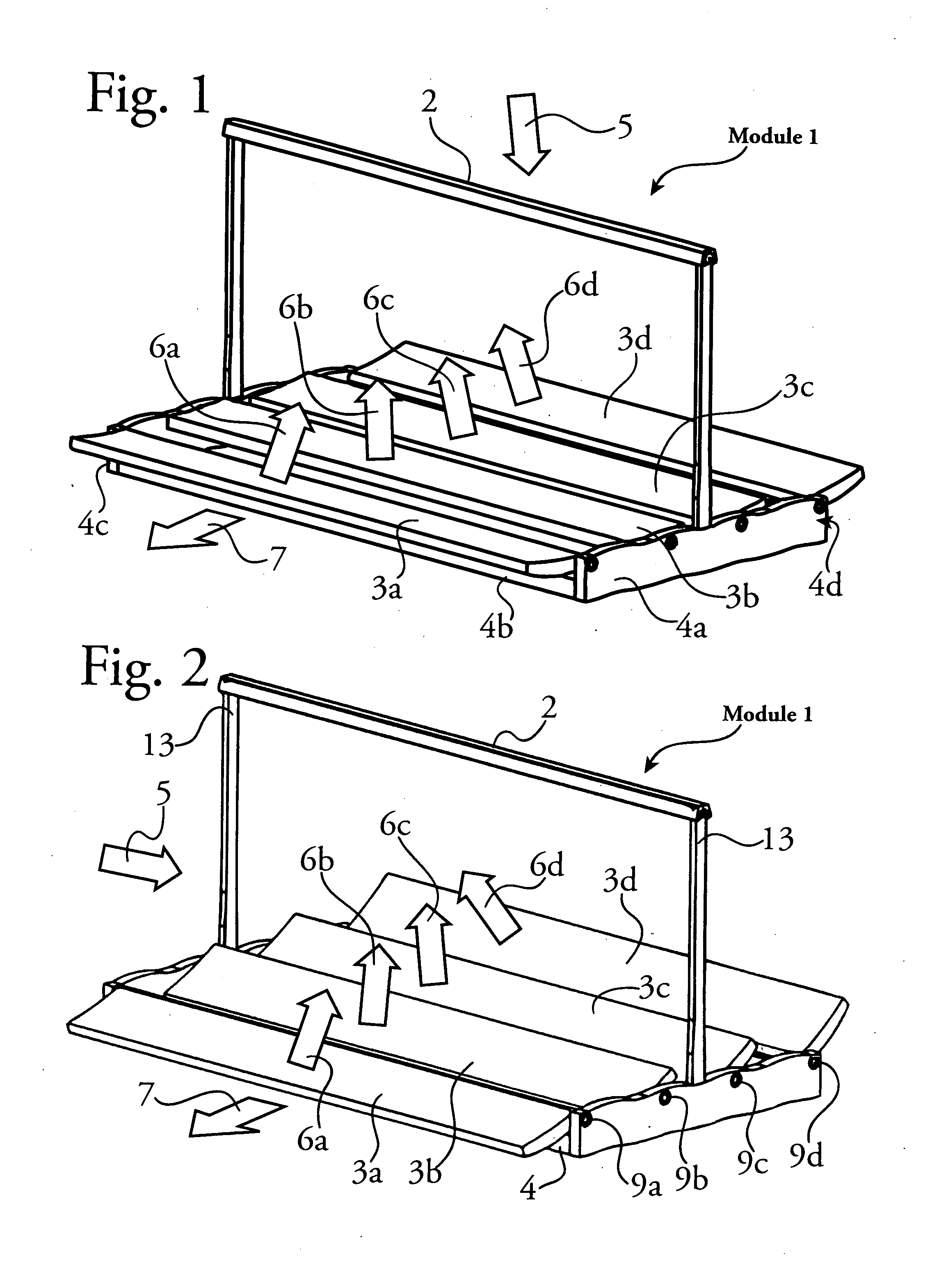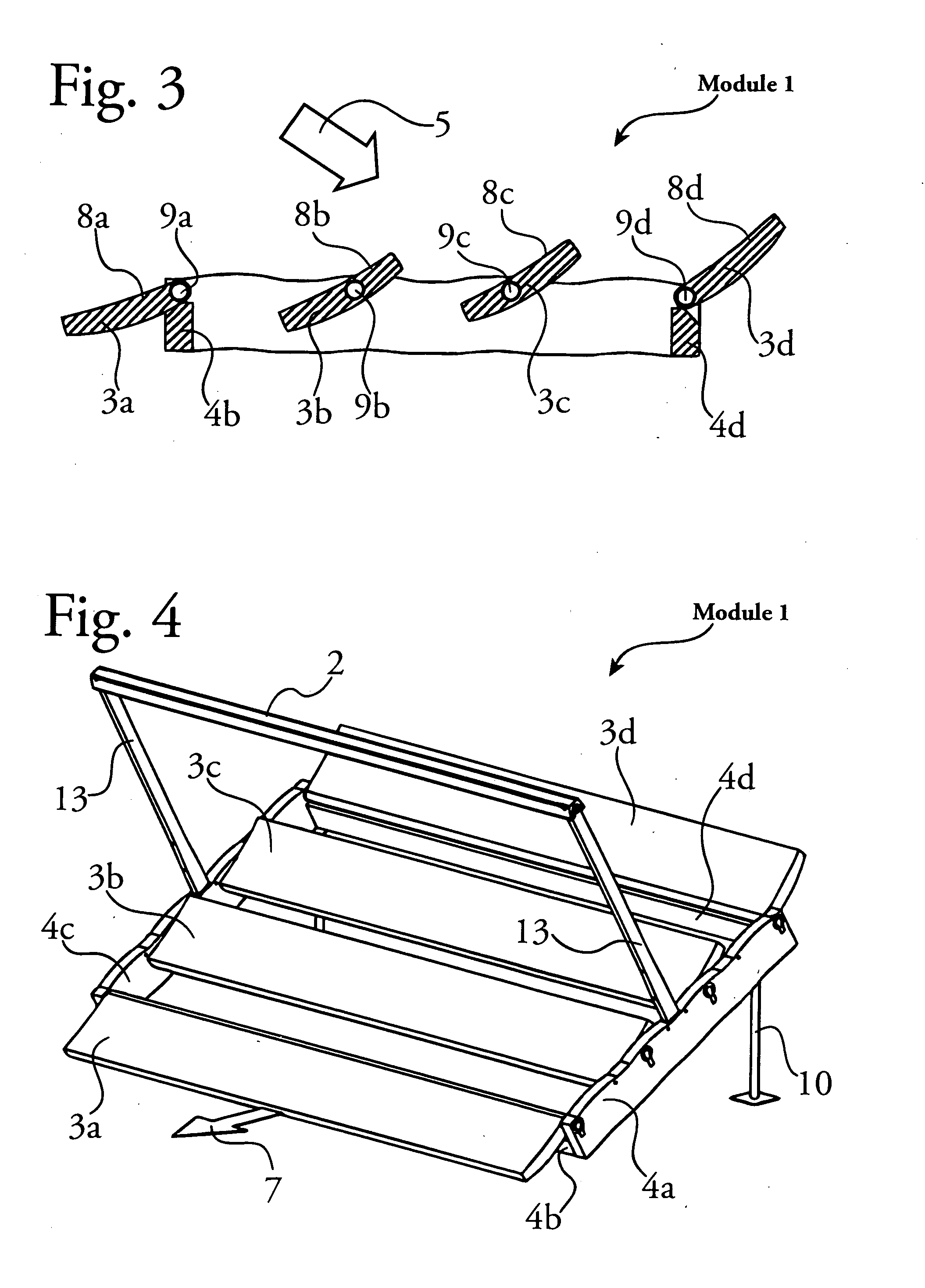Solar energy module
a solar energy module and solar energy technology, applied in the direction of thermal-pv hybrid energy generation, sustainable manufacturing/processing, lighting and heating apparatus, etc., can solve the problems of reducing the installation cost of the system, reducing the installation cost on site, and reducing the installation cost. , to achieve the effect of reducing the heat loss of the absorbing surface and simple connection of one absorbing surfa
- Summary
- Abstract
- Description
- Claims
- Application Information
AI Technical Summary
Benefits of technology
Problems solved by technology
Method used
Image
Examples
Embodiment Construction
[0044]In the following, each member of a set of similar components will have a suffix letter (a, b, c, d . . . ) to distinguish each individual member of the set. For example, reflectors 3 refer to the set of reflectors 3a, 3b, 3c, and 3d. Another annotation uses ellipses (a series of dots) between the set's first element and the set's last element to describe a set, i.e., reflectors 3 can also be referred to as 3a . . . 3d.
[0045]FIG. 1 shows the preferred embodiment of module 1 during normal usage absorbing solar energy from the sun. The sun's energy is shown diagrammatically as the arrow 5 directing solar energy onto the module 1. Solar energy is reflected from reflectors 3a . . . 3d onto absorber 2 where it heats a fluid flowing through absorber 2 or generates electricity by photovoltaic devices within absorber 2.
[0046]Each of reflectors 3a . . . 3d reflect some portion of the solar energy 5 directed on a reflector 3 to the absorber 2. Each reflector 3a . . . 3d redirects solar ...
PUM
 Login to View More
Login to View More Abstract
Description
Claims
Application Information
 Login to View More
Login to View More - R&D
- Intellectual Property
- Life Sciences
- Materials
- Tech Scout
- Unparalleled Data Quality
- Higher Quality Content
- 60% Fewer Hallucinations
Browse by: Latest US Patents, China's latest patents, Technical Efficacy Thesaurus, Application Domain, Technology Topic, Popular Technical Reports.
© 2025 PatSnap. All rights reserved.Legal|Privacy policy|Modern Slavery Act Transparency Statement|Sitemap|About US| Contact US: help@patsnap.com



